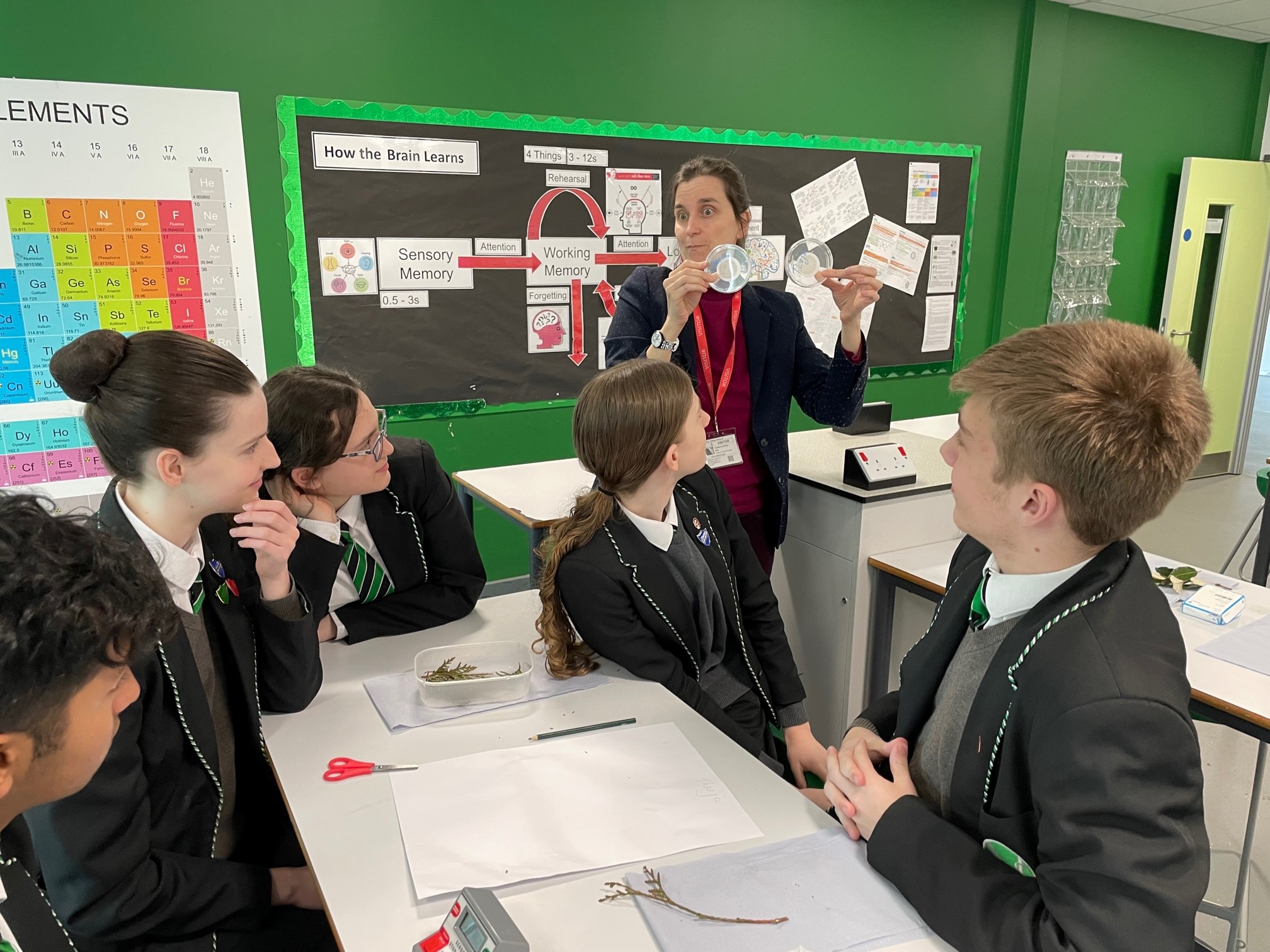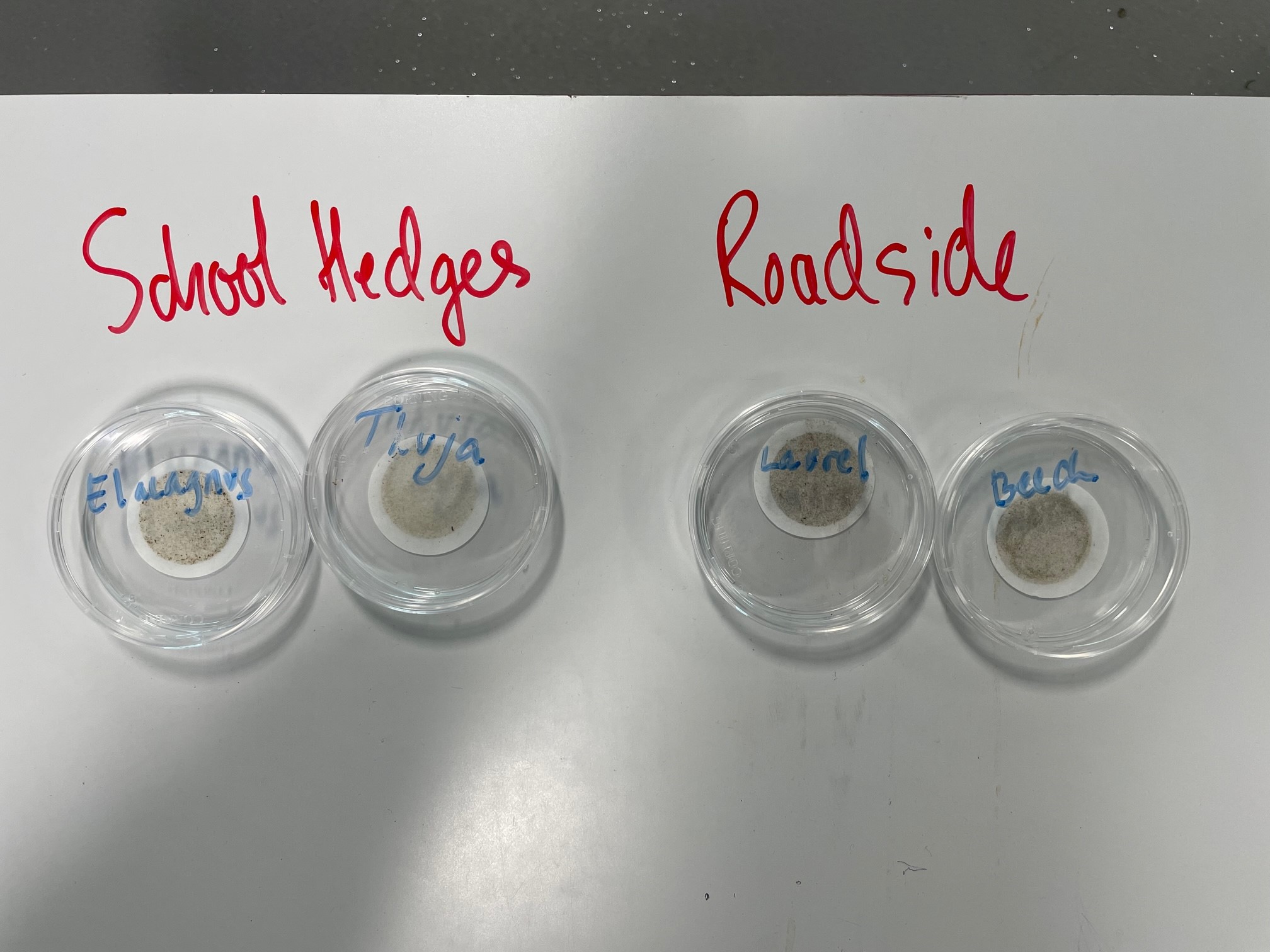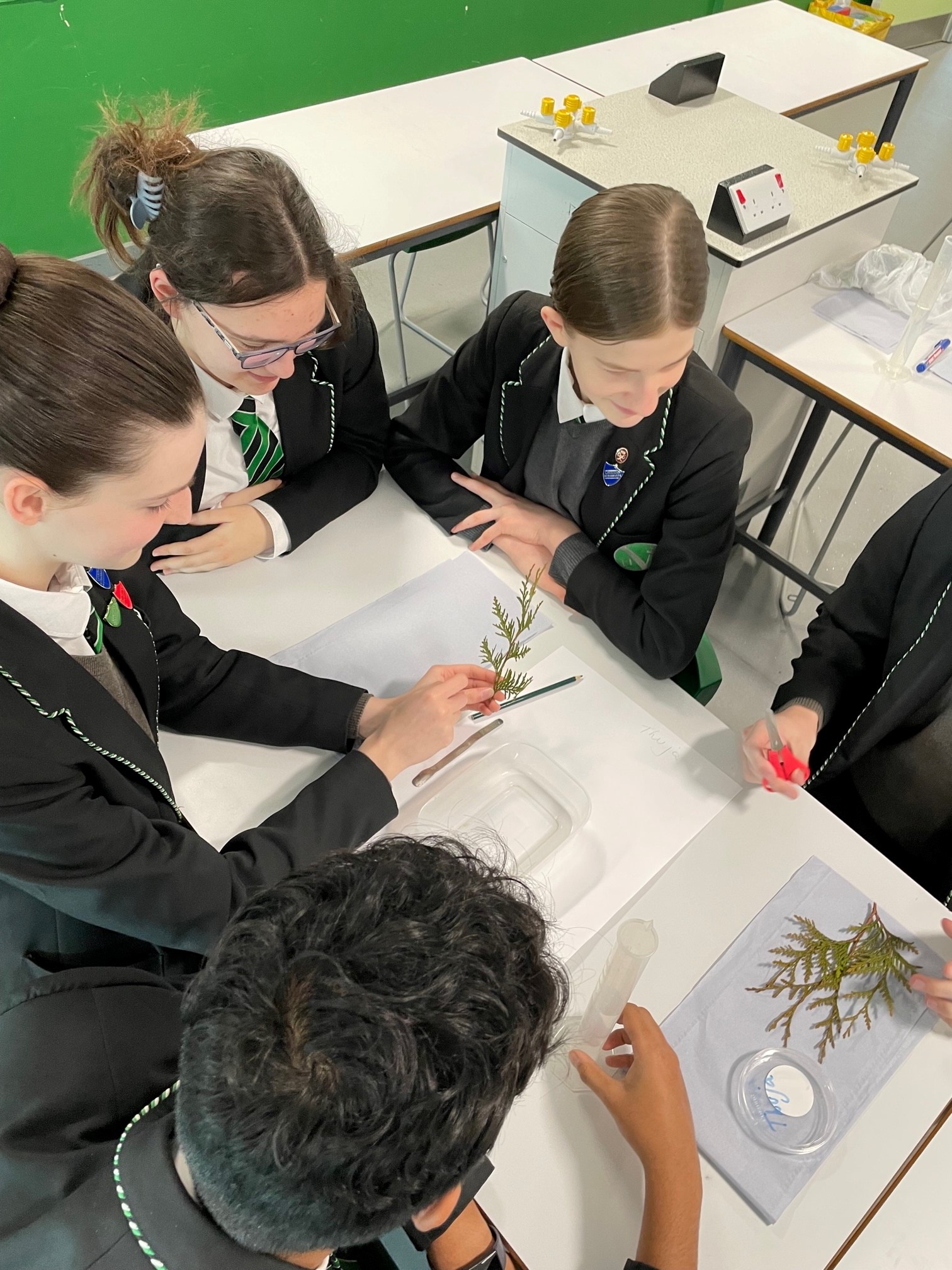Secondary school pupils get hands on with hedges
Year 10 pupils at a Surrey secondary school are taking part in an RHS scientific study to understand whether mixed hedging has more year-round environmental benefits than planting just one species.
16 March 2023

“I hadn’t considered science as a career before but as a result of Dr Blanusa’s sessions this term I’ve changed my mind,” Henry, a year 10 pupil at Hoe Valley School in Woking, explained. “I’ve liked the hands-on science experience,” he added. “Dr Blanusa is very enthusiastic,” said classmate Katie.
These children are taking part in an RHS scientific study to understand whether mixed hedging has more year-round environmental benefits than planting just one species. Ninety 14 and 15-year-olds from this Surrey secondary school are involved. In November 2022, principal scientist Dr Tijana Blanusa and her team planted 60 hedge plants, consisting of a broadleaf mix and evergreen, in the school’s playground.
“We chose hedges because they take up relatively little space, they’re cheap, they’re quite prevalent, people can relate to them, and we think they can do some good things for relatively little money in the urban environment in terms of improving air quality, reducing flood risk and maybe reducing noise,” revealed Dr Blanusa.
“The school let us choose a plot within their school grounds and we planted this with a mix of hedges which are bordering the roadside. We’ve set up a weather station and, with the students' help, have been taking measurements of soil moisture around plants and plants’ water use - a proxy for flood alleviation, quantities of air pollution particles deposited on various leaves (as an indicator of pollution trapping capacity) and looking at temperatures around the hedge. We are doing baseline surveys, then taking more measurements as time goes on.”
19 pupils have taken part in four hands-on science sessions this term with Dr Blanusa. This group and another class are also involved in classroom-based activities using Green Shields, an educational app being developed by the RHS in collaboration with children and young people. This app aims to facilitate learning about plants and their value in mitigating flood risks, improving air quality and summer-time cooling.
Investigations to understand the students’ perceptions of the role of plants in improving the environment are being carried out and the impact of the hands-on science sessions, exposure to the Green Shields app, or neither, measured.
“Students are most enthusiastic when they can see the bigger picture,” commented Oliver Woolley, Assistant Head Teacher at Hoe Valley School. “The group who have been involved in Dr Blanusa’s ‘Green Team’ have had aspects of their studies brought to life through the science sessions. Hopefully they are gaining an understanding of the value of plants. I hope the students also feel inspired by Dr Blanusa’s work as a plant scientist and that this might inspire their own career choices.”

Get involved
This project is funded by the Royal Commission for the Exhibition of 1851. The results will be published in 2024. In the meantime, here are some hedge measures your school can get involved in:
-
If you are considering replacing a fence or wall why not plant a hedge instead? Hedges are living boundaries. Click here to find out more about the benefits.
-
Versatile ivies can adapt to almost any situation. Perhaps you could green up a wall at your school? They grow well as climbers, groundcover or topiary. For more info visit the RHS website.
-
Encourage wildlife. Hedges are valuable wildlife corridors and provide shelter and food for a wide range of creatures, from birds and insects to small mammals, including our native hedgehogs. Find out more about developing and maintaining features to enhance the natural environment in your school garden.

Above: Students compare leaf samples from hedges in the school grounds. The leaf samples from hedges approximately 20 metres from a busy road appear ‘dirtier’ than those further away from the road. The ‘dirt’ is the particulate matter (PM) pollution.

